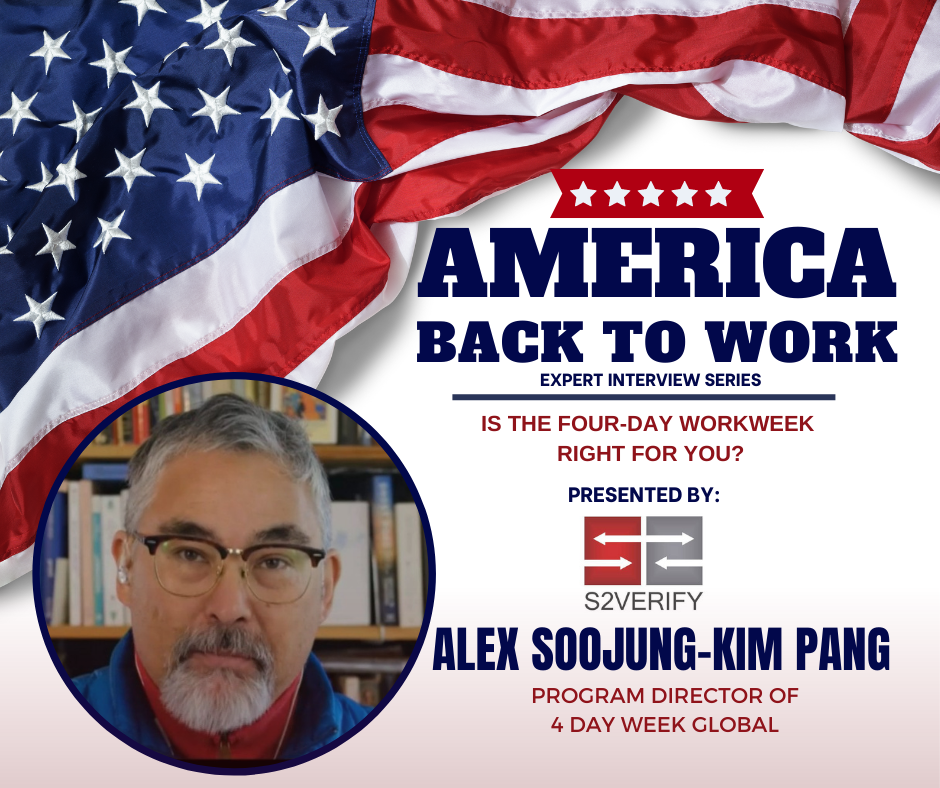
America Back to Work: Alex Pang, 4 Day Week Global
How a Four-Day Workweek Can Boost Productivity and Wellbeing
In this week’s episode of America Back to Work, Arnette Heintze sits down with Alex Soojung-Kim Pang, a renowned futurist, technologist, and author of several best-selling books, including “Shorter: Work Better, Smarter, and Less—Here’s How,” to explore the fascinating concept of a four-day work week.
Alex shares his insights on how reducing the number of work hours per week without cutting salaries or productivity expectations can significantly improve employee well-being, recruitment, and retention.
He delves into the practical implications of implementing a four-day workweek, especially from an HR perspective. He discusses the challenges and benefits, providing real-world examples from companies successfully adopting this model.
The episode covers:
- What a four-day workweek truly entails
- The effect on recruitment and retention
- The changes needed in company policies and operational procedures
- The role of leadership in transitioning to a four-day workweek
- Insights from a study involving 60 companies in the UK
- Characteristics of organizations most suited for a four-day workweek
- Practical advice for HR professionals to influence leadership
Arnette guides the conversation to uncover valuable data, stories, and best practices that can help any organization considering this transformative approach to work. Whether your company is small or large, this episode provides a wealth of information to rethink how we structure our workdays to benefit employees and organizations.
Key Takeaways
- Defining the Four-Day Work Week: reducing work hours without cutting salaries or productivity.
- Effect on HR Functions: addressing recruitment and retention issues and rethinking policies around PTO, vacation days, and contracts.
- Leadership and Cultural Shifts: moving from transactional to transformational management styles and supporting leadership in the transition.
- Real-World Insights: improvements in work-life balance, employee well-being, and reduced sick days.
- Suitability and Challenges: industries and company characteristics best suited for a four-day work week. Addressing complex logistics and control over time/workflow.
- Data and Influence: using data to influence leadership and essential KPIs to monitor in the initial stages of implementation.
America Back to Work: Watch the Video Now
America Back to Work: Listen to the Podcast Now
About America Back to Work
Subscribe to America Back to Work in your favorite podcast player so you don’t miss an episode. You can do that by clicking here.
S2Verify is one of the leading, privately held, pre-employment background screening companies in the United States.
Arnette Heintze is co-founder and chief strategy officer at S2Verify. Before establishing S2Verify, Arnette spent more than three decades working at the highest levels of federal, state, and local law enforcement.
He served more than 20 years in the United States Secret Service as a special agent and senior executive,—oØ where he planned, designed, and implemented security strategies to protect U.S. Presidents, world leaders, events of national significance, and our nation’s most sensitive assets, including financial infrastructure.
After retiring from the Secret Service, Arnette focused on building the growth and performance of innovative start-ups and SMBs. In 2004, he established Hillard Heintze, a globally recognized strategic security risk management and investigations firm.
In 2009, along with Bill Whitford and Jim Zimbardi, Arnette established S2 Verify with an approach and methodology that delivers fast, accurate, compliant, and affordable background screening insights crucial to better managing insider risks, threats, and vulnerabilities.



